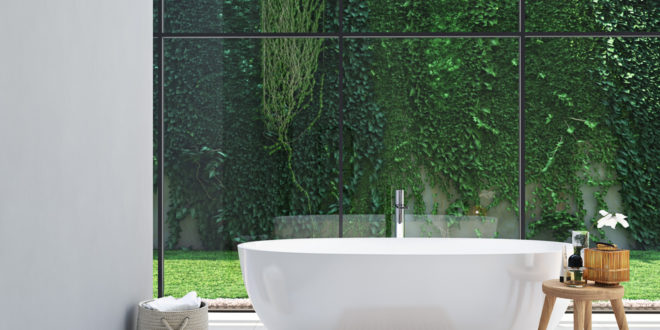While it may appear as though we have an infinite supply of water on this planet, this is simply not the case. Water is a finite and precious resource and, regrettably, we continue to waste our limited supply. In many countries, the amount of water available to each person decreases as the population grows.
With so many communities dealing with water supply and cleanliness issues, it’s high time for us to be more mindful with how we use water and consider the sustainability of our plumbing systems at home.
What is Green Plumbing?
Green plumbing is a term that refers to the use of eco-friendly systems in place of older, inefficient systems. It’s designed to minimize the environmental impact of your water usage through methods that can help conserve water and energy, and – as a result – money on utilities, as well.
Going green can help you reduce your carbon footprint, extend the life of your plumbing systems and spend less on plumbing repair, and improve the overall quality of your home environment.
6 Eco-Friendly Plumbing Upgrades
These upgrades can help you design a more environmentally friendly plumbing system in your home.
1. Low-Flow Toilets

Toilet use accounts for nearly 30% of household water consumption. Thus, replacing an older toilet with a newer, low-flow model can drastically reduce water consumption in your home and, of course, your future water and energy bills.
When choosing flush toilets, go for either a high-efficiency or dual-flush toilet. High-efficiency toilets use 50% less water than traditional models, while dual-flush toilets feature two flushing modes – one for solids and one for liquids – and consume even less water than high-efficiency models. Dual flush toilets are generally more expensive than standard low-flow toilets, but the money saved over time helps offset this additional expense.
2. Water Efficient Faucets and Showerheads
Faucets and showerheads are two of the most frequently used plumbing fixtures in the average home. If these fixtures are leaking or inefficient, a lot of water would be wasted over time, affecting not only your pockets but the environment, too.
Replacing older faucets and showerheads with more efficient models can result in a 40% reduction in water flow. These upgrades are relatively inexpensive but can make a significant difference in reducing water waste in your home.
3. Solar-Powered Water Heaters
If you have a large family, the annual cost of operating your hot water heater may run very high. You can significantly reduce or even eliminate this expense by switching to a solar-powered water heater. All solar-powered water heaters use solar energy to heat your home’s water, though their designs vary significantly.
Solar panels on your home will not only save you money on energy costs associated with heating your water but on almost every other aspect of your home that requires electricity. This renewable energy source is one of the most effective ways to go green.
4. Tankless Water Heaters
If solar is not an option, tankless water heaters are an excellent substitute. Unlike conventional water heaters, tankless water heaters consume significantly less energy because they do not store or continuously heat water. These devices use electricity to heat water as needed, eliminating the need to fire up a boiler when demand is low.
Another environmentally friendly feature of a tankless heater is its long life. These tanks typically last twice as long as a standard water heater, which means they don’t need to be replaced as frequently. One disadvantage of tankless water heaters, though, is that they typically cannot support multiple water-use activities at the same time, which means you’ll have to install more than one heater in your home.
5. Greywater Recycling System
Do you have a spacious lawn? Installing a greywater recycling system in your home is one way to reduce your home’s water consumption while sustaining your current lawn watering schedule.
Gray water is freshwater that has been lightly used and has not made contact with raw sewage. Residential greywater recycling systems collect gray water in your home, filter it to remove contaminants and debris, and then store it until it is time to water your lawn.
6. Green Sprinkler System
Inefficient landscape watering is one of the largest water wastes across the country. There are numerous ways to go green here, beginning with irrigation automation. Rather than manually operating a hose or sprinkler, program a timer to turn the water on or off at predetermined times. This allows you to run your sprinklers at night and maximize your water use because less of it is lost to evaporation.
Another (and an even better) option is a smart sprinkler system, which can monitor local weather conditions and use unique data from the property to disperse the appropriate amount of water. Irrigation is applied in short bursts to allow for absorption before adding more.
Going Green with Your Plumbing System
Making the switch to green plumbing will not only save you money on your monthly water and energy bills, but it will also conserve fresh, clean water. While it’s true that modifications to your plumbing system can be expensive, you will save more money in the long run by using less water and energy.
To ensure that your home’s plumbing is energy efficient, always hire a certified green plumber to install water-efficient systems. These professionals are trained in sustainable practices and can guarantee the quality and effectiveness of their job.
About the author
Rachel Watson is the Senior Content Editor of Precision Air & Plumbing, a full-service HVAC, plumbing, and home performance contractor operating in Chandler, Arizona. Rachel enjoys yoga and writing articles about how to make home living more energy-efficient and environmentally friendly.



